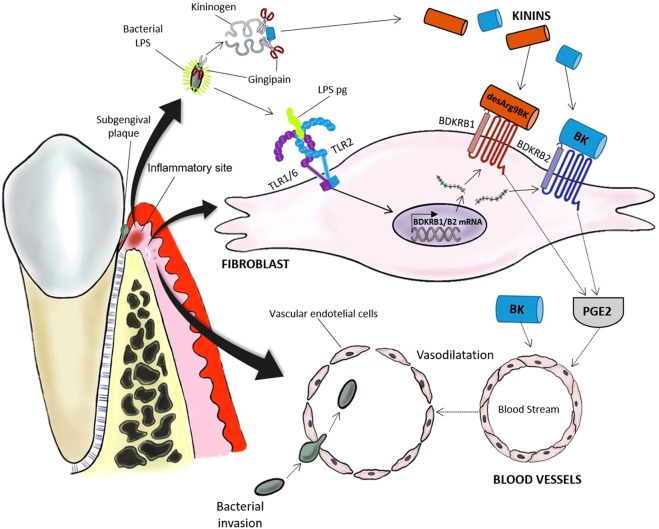Figure 7.
Proposed role of kinin receptors in gingival fibroblasts for the invasion of P. gingivalis in gingival blood vessels. LPS from P. gingivalis is released from the biofilm on teeth at the inflammatory site and binds to TLR2, composed either by the heterodimer TLR1/TLR2 or TLR6/TLR2 in the cell membrane of human gingival fibroblasts. At the same time, the kinin-releasing protease gingipain expressed by P. gingivalis promotes the generation of kinins at the inflammatory site. Activation of TLR2 leads to the expression of kinin receptor mRNA and protein by gingival fibroblasts. The binding of BK and DALBK to B2 and B1 receptors, respectively, expressed by the fibroblasts leads to the release of PGE2. Kinins and PGE2 may act as vasodilator agents, facilitating the penetration of bacteria into the blood vessels and their spreading to other tissues.

